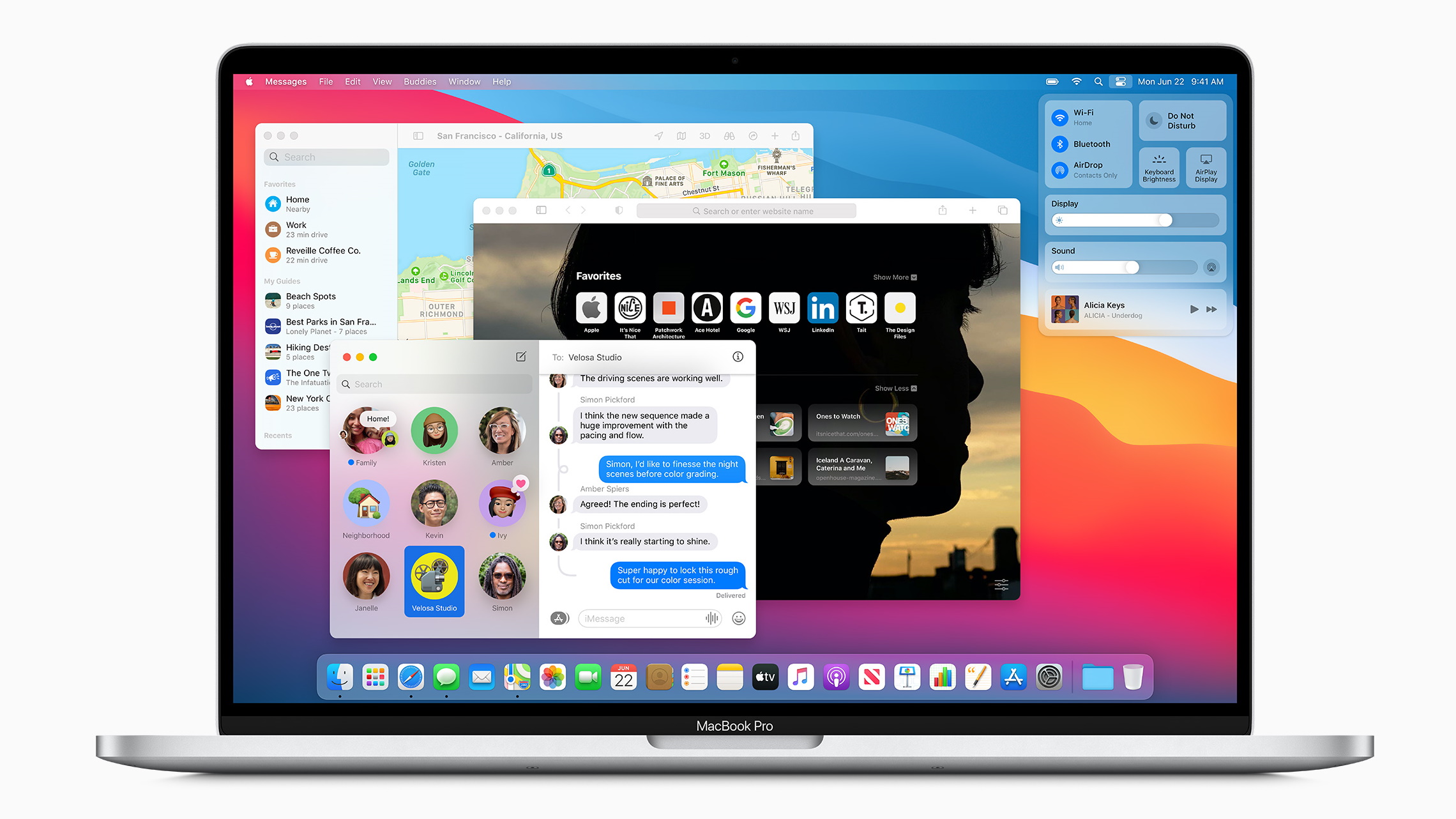Expectation Break Mac OS
In June of 2004, during the WWDC keynote address, Steve Jobs revealed Mac OS X 10.4 Tiger to developers and the public for the first time. When the finished product arrived in April of 2005, Tiger was the biggest, most important, most feature-packed release in the history of Mac OS X by a wide margin. Apple's marketing campaign reflected this, touting 'over 150 new features.'
All those new features took time. Since its introduction in 2001, there had been at least one major release of Mac OS X each year. Tiger took over a year and a half to arrive. At the time, it definitely seemed worth the wait. Tiger was a hit with users and developers. Apple took the lesson to heart and quickly set expectations for the next major release of Mac OS X, Leopard. Through various channels, Apple communicated its intention to move from a 12-month to an 18-month release cycle for Mac OS X. Leopard was officially scheduled for 'spring 2007.'

As the date approached, Apple's marketing machine trod a predictable path.
Newline (frequently called line ending, end of line (EOL), line feed, or line break) is a control character or sequence of control characters in a character encoding specification (e.g. ASCII or EBCDIC) that is used to signify the end of a line of text and the start of a new one. The annual OS X upgrades tend to break your third party software and hardware drivers, many have to pay for software upgrades and/or buy newer hardware as some makers won't supply drivers for their older hardware despite them still working fine. Almost every OS X version one upgrades their Mac annually to robs the machine of performance.
Apple even went so far as to list all 300 new features on its website. As it turns out, 'spring' was a bit optimistic. Leopard actually shipped at the end of October 2007, nearly two and a half years after Tiger. Did Leopard really have twice as many new features as Tiger? That's debatable. What's certain is that Leopard included a solid crop of new features and technologies, many of which we now take for granted. (For example, have you had a discussion with a potential Mac user since the release of Leopard without mentioning Time Machine? I certainly haven't.)
Mac OS X appeared to be maturing. The progression was clear: longer release cycles, more features. What would Mac OS X 10.6 be like? Would it arrive three and a half years after Leopard? Would it and include 500 new features? A thousand?
At WWDC 2009, Bertrand Serlet announced a move that he described as 'unprecedented' in the PC industry.

That's right, the next major release of Mac OS X would have no new features. The product name reflected this: 'Snow Leopard.' Mac OS X 10.6 would merely be a variant of Leopard. Better, faster, more refined, more... uh... snowy.
AdvertisementThis was a risky strategy for Apple. After the rapid-fire updates of 10.1, 10.2, and 10.3 followed by the riot of new features and APIs in 10.4 and 10.5, could Apple really get away with calling a 'time out?' I imagine Bertrand was really sweating this announcement up on the stage at WWDC in front of a live audience of Mac developers. Their reaction? Spontaneous applause. There were even a few hoots and whistles.
Many of these same developers applauded the '150+ new features' in Tiger and the '300 new features' in Leopard at past WWDCs. Now they were applauding zero new features for Snow Leopard? What explains this?
It probably helps to know that the '0 New Features' slide came at the end of an hour-long presentation detailing the major new APIs and technologies in Snow Leopard. It was also quickly followed by a back-pedaling ('well, there is one new feature...') slide describing the addition of Microsoft Exchange support. In isolation, 'no new features' may seem to imply stagnation. In context, however, it served as a developer-friendly affirmation.
The overall message from Apple to developers was something like this: 'We're adding a ton of new things to Mac OS X that will help you write better applications and make your existing code run faster, and we're going to make sure that all this new stuff is rock-solid and as bug-free as possible. We're not going to overextend ourselves adding a raft of new customer-facing, marketing-friendly features. Instead, we're going to concentrate 100% on the things that affect you, the developers.'
But if Snow Leopard is a love letter to developers, is it a Dear John letter to users? You know, those people that the marketing department might so crudely refer to as 'customers.' What's in it for them? Believe it or not, the sales pitch to users is actually quite similar. As exhausting as it has been for developers to keep up with Apple's seemingly never-ending stream of new APIs, it can be just as taxing for customers to stay on top of Mac OS X's features. Exposé, a new Finder, Spotlight, a new Dock, Time Machine, a new Finder again, a new iLife and iWorkalmost every year, and on and on. And as much as developers hate bugs in Apple's APIs, users who experience those bugs as application crashes have just as much reason to be annoyed.
Enter Snow Leopard: the release where we all get a break from the new-features/new-bugs treadmill of Mac OS X development. That's the pitch.
Uncomfortable realities
But wait a second, didn't I just mention an 'hour-long presentation' about Snow Leopard featuring 'major new APIs and technologies?' When speaking to developers, Apple's message of 'no new features' is another way of saying 'no new bugs.' Snow Leopard is supposed to fix old bugs without introducing new ones. But nothing says 'new bugs, coming right up' quite like major new APIs. So which is it?
AdvertisementSimilarly, for users, 'no new features' connotes stability and reliability. But if Snow Leopard includes enough changes to the core OS to fill an hour-long overview session at WWDC more than a year before its release, can Apple really make good on this promise? Or will users end up with all the disadvantages of a feature-packed release like Tiger or Leopard—the inevitable 10.x.0 bugs, the unfamiliar, untried new functionality—but without any of the actual new features?
Yes, it's enough to make one quite cynical about Apple's real motivations. To throw some more fuel on the fire, have a look at the Mac OS X release timeline below. Next to each release, I've included a list of its most significant features.
That curve is taking on a decidedly droopy shape, as if it's being weighed down by the ever-increasing number of new features. (The releases are distributed uniformly on the Y axis.) Maybe you think it's reasonable for the time between releases to stretch out as each one brings a heavier load of goodies than the last, but keep in mind the logical consequence of such a curve over the longhorn haul.
And yeah, there's a little upwards kick at the end for 10.6, but remember, this is supposed to be the 'no new features' release. Version 10.1 had a similar no-frills focus but took a heck of a lot less time to arrive.
Looking at this graph, it's hard not to wonder if there's something siphoning resources from the Mac OS X development effort. Maybe, say, some project that's in the first two or three major releases of its life, still in that steep, early section of its own timeline graph. Yes, I'm talking about the iPhone, specifically iPhone OS. The iPhone business has exploded onto Apple's balance sheets like no other product before, even the iPod. It's also accruing developers at an alarming rate.
It's not a stretch to imagine that many of the artists and developers who piled on the user-visible features in Mac OS X 10.4 and 10.5 have been reassigned to iPhone OS (temporarily or otherwise). After all, Mac OS X and iPhone OS share the same core operating system, the same language for GUI development, and many of the same APIs. Some workforce migration seems inevitable.
And let's not forget the 'Mac OS X' technologies that we later learned were developed for the iPhone and just happened to be announced for the Mac first (because the iPhone was still a secret), like Core Animation and code signing. Such conspiracy theories certainly aren't helped by WWDC keynote snubs and other indignities suffered by Mac OS X and the Mac in general since the iPhone arrived on the scene. And so, on top of everything else, Snow Leopard is tasked with restoring some luster to Mac OS X.
Got all that? A nearly two-year development cycle, but no new features. Major new frameworks for developers, but few new bugs. Significant changes to the core OS, but more reliability. And a franchise rejuvenation with few user-visible changes.
It's enough to turn a leopard white.
Mac Os Catalina
Is your Mac up to date with the latest version of the Mac operating system? Is it using the version required by a product that you want to use with your Mac? Which versions are earlier (older) or later (newer, more recent)? To find out, learn which version is installed now.
If your macOS isn't up to date, you may be able to update to a later version.
Which macOS version is installed?
Expectation Break Mac Os Catalina
From the Apple menu in the corner of your screen, choose About This Mac. You should see the macOS name, such as macOS Big Sur, followed by its version number. If you need to know the build number as well, click the version number to see it.
Which macOS version is the latest?
These are all Mac operating systems, starting with the most recent. When a major new macOS is released, it gets a new name, such as macOS Big Sur. As updates that change the macOS version number become available, this article is updated to show the latest version of that macOS.
If your Mac is using an earlier version of any Mac operating system, you should install the latest Apple software updates, which can include important security updates and updates for the apps that are installed by macOS, such as Safari, Books, Messages, Mail, Music, Calendar, and Photos.
| macOS | Latest version |
|---|---|
| macOS Big Sur | 11.3 |
| macOS Catalina | 10.15.7 |
| macOS Mojave | 10.14.6 |
| macOS High Sierra | 10.13.6 |
| macOS Sierra | 10.12.6 |
| OS X El Capitan | 10.11.6 |
| OS X Yosemite | 10.10.5 |
| OS X Mavericks | 10.9.5 |
| OS X Mountain Lion | 10.8.5 |
| OS X Lion | 10.7.5 |
| Mac OS X Snow Leopard | 10.6.8 |
| Mac OS X Leopard | 10.5.8 |
| Mac OS X Tiger | 10.4.11 |
| Mac OS X Panther | 10.3.9 |
| Mac OS X Jaguar | 10.2.8 |
| Mac OS X Puma | 10.1.5 |
| Mac OS X Cheetah | 10.0.4 |